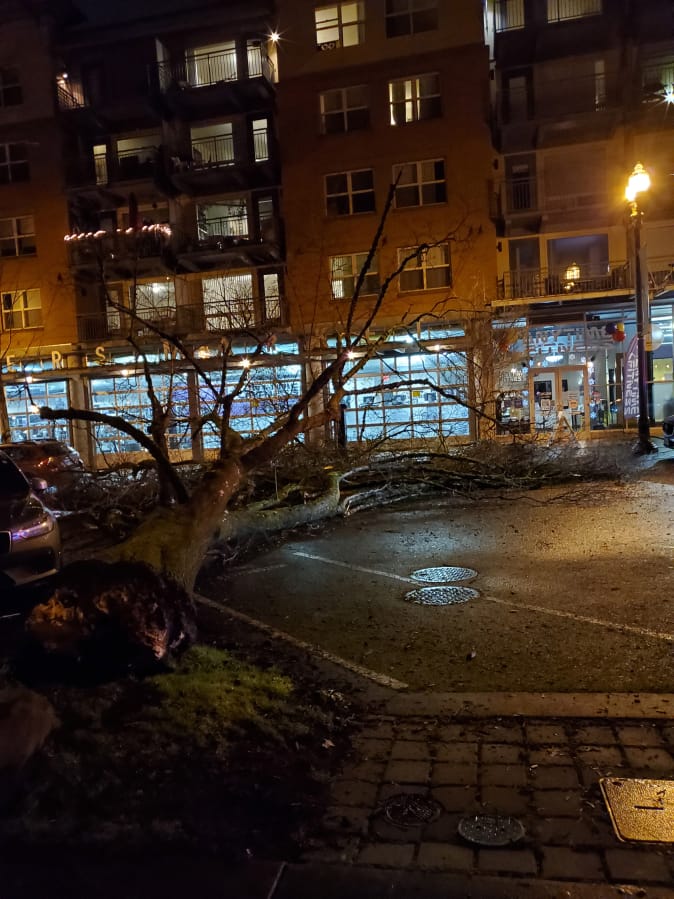If a tree falls in the downtown and doesn’t cause any damage, does it make a fuss?
Well, yeah. Turns out it’s still kind of a pain, as crews experienced Saturday night when a tree near Esther Short Park toppled over.
The offending tree was a fully grown Norway maple. It narrowly missed cars parked along Esther Street when it snapped at the base and fell into the roadway around 9:20 p.m. on Jan. 18. Bystanders reported that city public works crews were on the scene clearing the tree as of about 1 a.m. Sunday.
According to Charles Ray, Vancouver’s urban forester, the maple was about 50 years old — near the end of its lifespan.
“It appears the tree failure was due to root rot, which did not present any outward indications. We are still evaluating the exact cause,” Ray wrote in an email.
“This type of tree failure is uncommon, and we believe it’s likely related to this tree alone. We will be evaluating nearby trees following best management practices,” he added.
Norway maples, or Acer platanoides, are an invasive species native to Eastern Europe and western Asia. While they can live up to 250 years in ideal conditions, their lifespan in North America, where they were first brought in the 1700s, is considerably shorter.
There’s still a handful of Norway maples remaining along Esther Short Park, Ray wrote. The city’s Urban Forestry Commission removes and replaces the trees one at a time, “based on the health, condition or structure of the specific tree.”
“The city has been removing adjacent Norway maples that are in this same age range as they reach the end of their lifespan. We are replanting with other shade trees such as red maple and sugar maple trees, which have a longer lifespan,” Ray wrote.
According to David Bishop, a meteorologist at the National Weather Service’s Portland office, it’s unlikely that wind played a major role in taking the maple down.
The strongest gust of wind recorded nearby, at Pearson Field, clocked in at 18 mph around 9 p.m. Saturday. A wind speed gauge on the Interstate 205’s Glenn Jackson Bridge saw a 21 mph gust around the same time.
“I don’t recall any reports, or at least any anomalous readings or anything along those lines from the office,” Bishop said.
However, it’s possible that heavy rains in recent weeks may have played a factor. Norway maple trees are successful invaders in part because the trees have shallow root systems, which crowd out competitors. But the surface-level roots also anchor the trees more delicately in the ground.
“You have to take into account that the soil has been very, very saturated,” Bishop said. “It definitely has been a little on the breezy side, and the grounds are saturated, so it’s not out of the question that a breeze or a gust of wind could potentially topple over a tree.”




